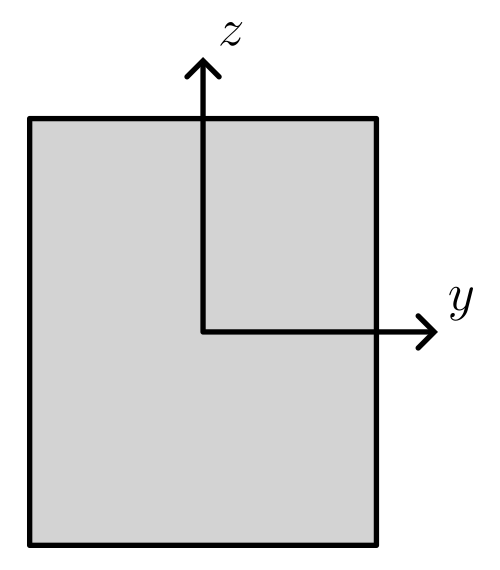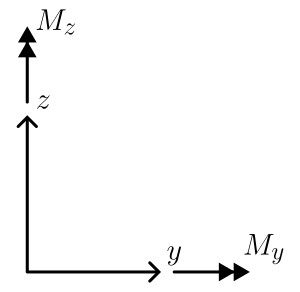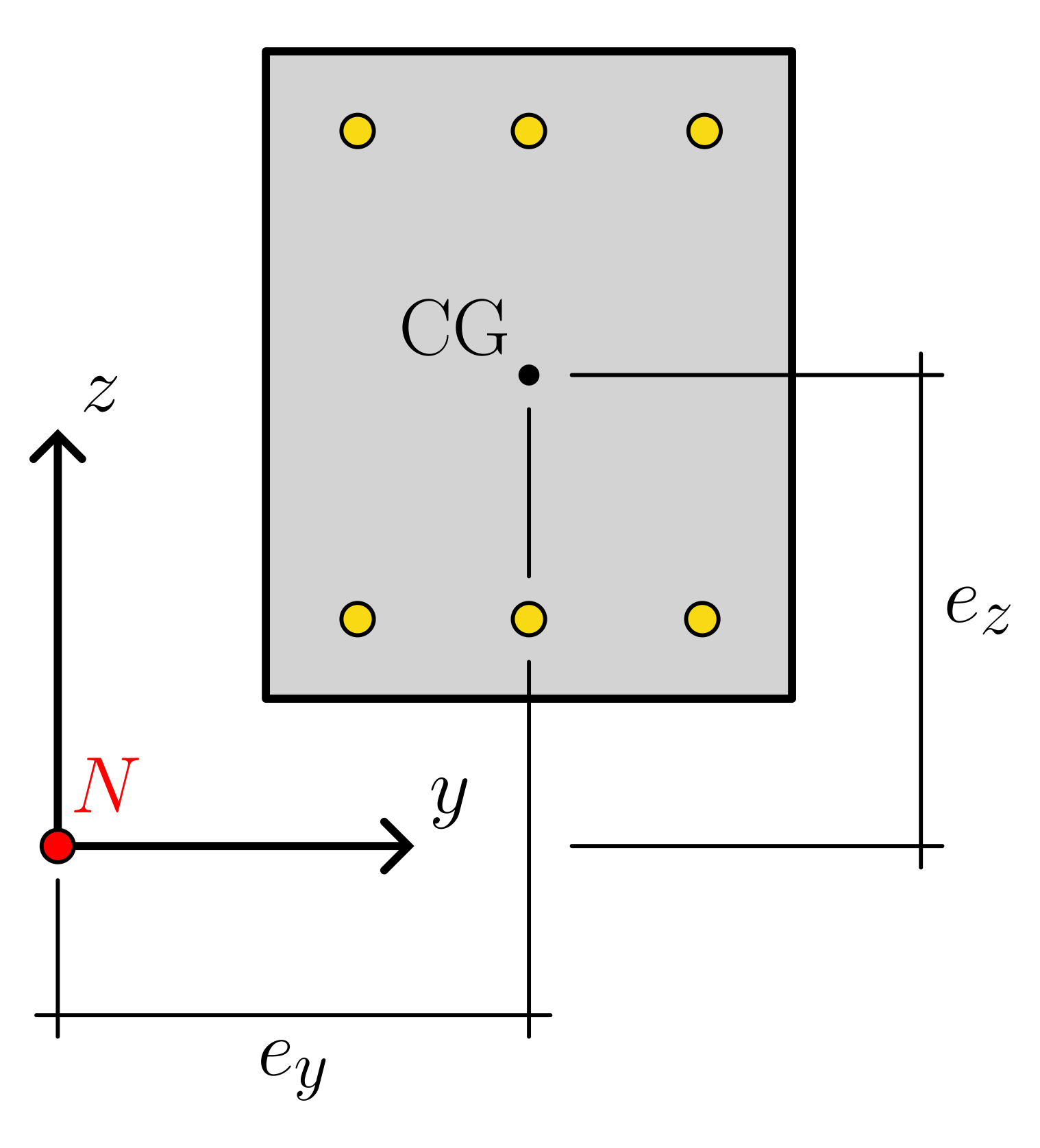Coordinate system and sign convention¶
Coordinate system¶
StructuralCodes adopts a global reference system (GRS) with the following conventions:
- \(x\)-axis
Points out of the screen (toward the observer).
- \(y\)-axis
Points to the right on the screen.
- \(z\)-axis
Points upward on the screen.
Note that this coordinate system is consistent with graphical representations, where Shapely operates in screen coordinates \(xy\), mapped to GRS coordinates as \(yz\).
The figure below illustrates the coordinate system in a rectangular geometry.


The coordinate system adopted in StructuralCodes shown on a rectangular geometry.
Sign conventions¶
The following sign conventions apply.
- Forces
Are negative when in compression.
- Moments
Follow the right-hand rule as illustrated in the figure below:
\(M_{\textrm{y}}\), bending about the \(y\)-axis, is positive when top fibers are stretched, and bottom fibers are compressed.
\(M_{\textrm{z}}\), bending about the \(z\)-axis, is positive when left fibers are stretched, and right fibers are compressed.
- Stresses and strains
Are positive in tension and negative in compression.
- Loads
Act in the origin of the GRS.


The definition of positive moments.
Loads act in the origin!
Pay particular attention to loads. When the section is subjected to axial load, this is considered acting in the origin, i.e. (0, 0). If the center of gravity of the section is not aligned with the origin, offset moments are generated, as illustrated in the figure below. If you want the load to act on the center of the geometry, translate the geometry in order to have the center in (0, 0).

